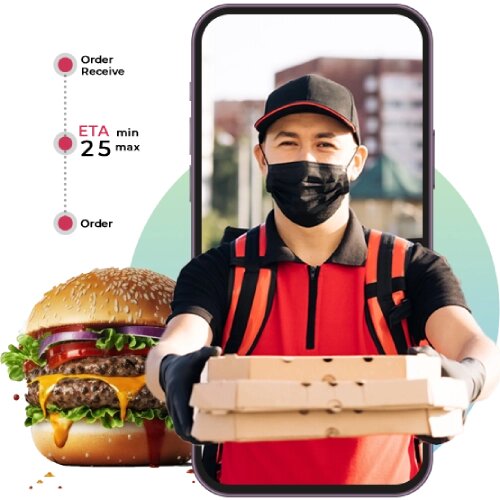Food delivery services are in high demand in today's fast-paced environment. The competition in food delivery app development is getting more intense as more customers choose the ease of ordering meals online. It's essential to comprehend what it takes to create great food delivery software from scratch if you want to thrive in this fast-paced sector.
Understanding the Market
Understanding the state of the food delivery industry today is crucial before beginning the development process. Analyze market trends, consumer preferences, and competitor strategies to identify opportunities and potential challenges.
Research and Planning
The first step towards a successful app development process is market research. Determine your target market's demands and preferences, analyze your competitors to find market gaps, and define your target audience.
Defining Unique Selling Proposition (USP)
Differentiation is key to standing out in a crowded market. Determine your app's unique selling proposition (USP) – what sets it apart from existing competitors? Whether it's faster delivery, a unique cuisine selection, or exceptional customer service, emphasize what makes your app special.
Developing the App
Once you have a clear vision and strategy, it's time to bring your app to life. Collaborate with experienced developers and designers to create a user-friendly interface and seamless navigation flow.
Choosing the Right Features
When building a food delivery app, prioritizing features is crucial. Essential functionalities include user registration, restaurant listings, menu browsing, order placement, real-time tracking, and secure payment options.
User Experience (UX) Design
User experience (UX) design plays a pivotal role in the success of a food delivery app. Focus on intuitive navigation, visually appealing layouts, and responsive design to ensure a positive user experience across devices.
Backend Infrastructure
Behind every successful food delivery app is a robust backend infrastructure. From server setup to database management, prioritize scalability, reliability, and security to handle increasing user traffic and ensure seamless operations.
Payment Integration and Security
Security is paramount when handling sensitive customer data and financial transactions. Integrate trusted payment gateways and implement encryption protocols to safeguard user information and prevent data breaches.
Testing and Quality Assurance
Before launching your app to the public, thorough testing is essential to identify and address any bugs or glitches. Conduct comprehensive quality assurance (QA) testing across various devices and platforms to ensure a smooth user experience.
Launching the App
A successful app launch requires careful planning and execution. Generate buzz through pre-launch marketing campaigns, leverage social media influencers, and offer exclusive promotions to attract early adopters.
Marketing and Promotion
Once your app is live, invest in marketing and promotion to reach your target audience. Utilize a mix of digital marketing channels, such as social media advertising, search engine optimization (SEO), and app store optimization (ASO), to increase visibility and drive downloads.
User Feedback and Iteration
Listen to your users' feedback and continuously iterate based on their suggestions and pain points. Incorporate new features, optimize existing functionalities, and prioritize user satisfaction to foster long-term loyalty and retention.
FAQs (Frequently Asked Questions)
How much does it cost to develop a food delivery app?
Developing a food delivery app can vary significantly in cost, depending on factors such as complexity, features, and development time. On average, a basic app may cost between $10,000 to $50,000, while more advanced apps can range from $50,000 to $150,000 or more.
How long does it take to build a food delivery app?
The timeline for developing a food delivery app can vary based on various factors, including app complexity, design requirements, and development resources. On average, it may take anywhere from three to nine months to build and launch a fully functional food delivery app.
What are the essential features of a food delivery app?
Essential features of a food delivery app include user registration, restaurant listings, menu browsing, order placement, real-time order tracking, secure payment integration, ratings and reviews, customer support, and loyalty rewards programs.
How can I attract users to my food delivery app?
To attract users to your food delivery app, focus on targeted marketing campaigns, partnerships with local restaurants, referral programs, promotional discounts, and providing exceptional customer service. Utilize social media platforms, influencers, and app store optimization (ASO) to increase visibility and downloads.
How do I ensure the security of transactions on my food delivery app?
Ensure the security of transactions on your food delivery app by implementing robust encryption protocols, integrating trusted payment gateways, and complying with industry standards for data protection, such as PCI DSS (Payment Card Industry Data Security Standard).
How can I improve user retention on my food delivery app?
To improve user retention on your food delivery app, focus on delivering a seamless user experience, personalized recommendations, timely notifications, and exclusive rewards for loyal customers. Encourage user feedback and iterate based on their suggestions to enhance satisfaction and engagement.







